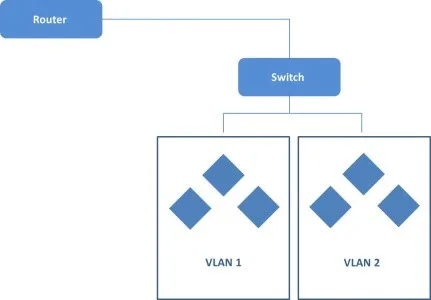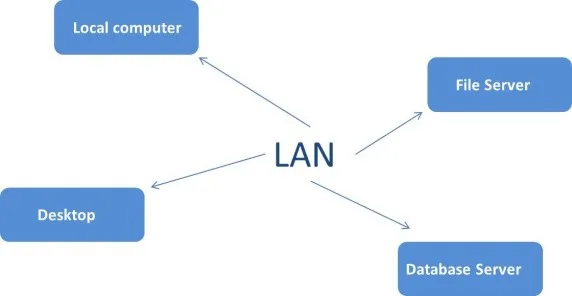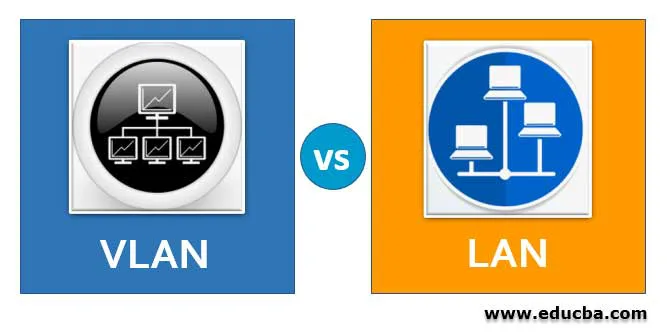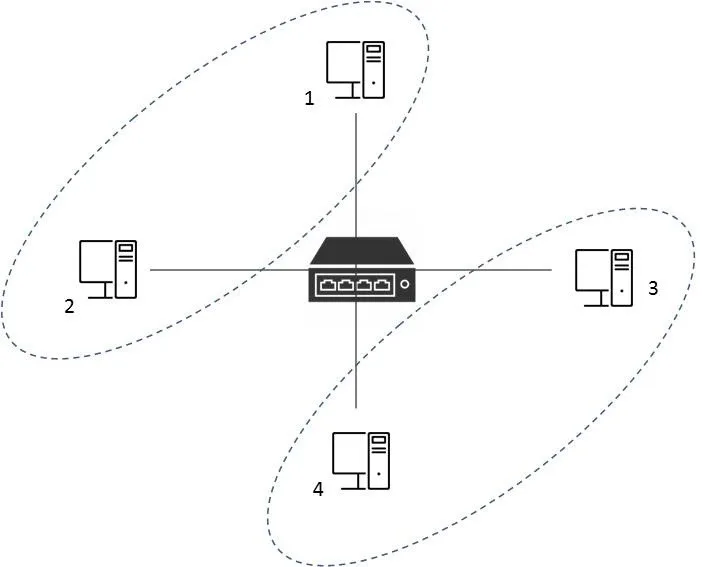Difference Between VLAN vs LAN
LAN is a set of network devices that use connected device communication. Similarly, VLAN is a type of LAN that increases flat LAN capabilities. There are significant differences between LAN and VLAN; for example, the LAN operates in a single domain, whereas VLAN works in multiple domains. Regardless of their physical location, VLAN can combine the terminal with an identical requirement that is not possible in the case of LAN. In order to avoid congestion and load, the networks are split into workstations within a LAN. LAN’s previously basic capacity is reduced and causes network congestion. LAN build with hubs, switches or routers, whereas Virtual LAN can only be built with switches or bridges.
Head to Head Comparison Between VLAN vs LAN(Infographics)
Below are the Top 10 Difference between VLAN vs LAN
Key Difference Between VLAN vs LAN
The key differences between VLAN vs LAN are as follows:
- LAN stands for LOCAL area network, whereas VLAN stands for Virtual local area network
- Setting a LAN is a costly arrangement, whereas VLAN is an effective management strategy at comparatively lesser investment.
- Resource transmission in term of data, software, and hardware is high in LAN compared to the slow latency of VLAN.
- In LAN setup arrangement, we generally use hubs, routers, and switches, whereas, in VLAN, we generally use bridges and switch.
- Packets are a way to exchange our information, taking of LAN the packet are introduced to every single device, whereas in VLAN, the packets are sent to separate and specific broadcast domains.
- LAN networks are less efficient than VLAN
- In LAN all the configuration has redone in one single PC whereas in VLAN the configuration is done in both the switch and PC.
- In LAN, a user cannot configure ports available in switches, whereas, in VLAN, the configuration is done at each port available in a switch.
- The performance graph for LAN is less in comparison to VLAN.
- LAN needs more administration network setup than VLAN; in VLAN, the hierarchy has already been defined as per the changing need, but for LAN, a user has to regularly access data or information.
- In LAN, the data transmission is not safe in comparison to the VLAN setup.
- LAN protocols like token rings and FDDI are used in LAN standard, whereas, in VLAN, special protocols like ISL (inter-switch link) and VTP (VPN trunk protocol) are employed.
- With switches, the VLAN offers better and enhanced traffic management and reduces latency which is comparatively high for LAN.
- We have two hosts, namely 1 & 2 in one department and host 3 and 4 in some other department. With users working on LAN setup, they have only two choices for establishing the connection – either all devices are connected together on the same LAN (this scenario works only if we assume that no two user groups will ever need information from another group) or different subgroups can have separate setup.
- For both, these cases are not a good practice in today’s world as one (former) will have multiple security-related issues, and the later will become expensive quickly. Whereas with a VLAN arrangement, we get an effective way to manage these issues – we can group together the 1 & 2 and 3 & 4 separate; by doing this, the traffic will be kept isolated on the switch. Plz, refer to the below image.
VLAN vs LAN Comparison Table
Given below are the major comparison between VLAN vs LAN:
| Basis of Comparison | VLAN | LAN |
| Architecture Diagram |  |
 |
| Architecture diagram explanation | VLAN has multiple broadcast domain. | The LAN has a single broadcast domain. |
| Existence | VLAN came into existence in 2003. | LAN technology became a reality in the late 1970s. |
| Technologies |
The VLAN network technologies are:
|
Let us see what all technologies LAN offers its users:
|
| Design |
The design that supports VLAN is IEEE 802 1Q (initially), and then there were several changes like
|
There has been a phenomenal change in LAN technology from the time it was first introduced: Early Ethernet were 10BASE 5 and 10BASE2 with co-axial cables then came the twisted pair and further to 10BASET and the latest edition is the optical fiber. |
| Network protocols | The VLAN use standard protocols comprise of ISP and VTP. | They use the standard Ethernet protocols such as token rings and FDDI. |
| Software configuration | A user needs to know multiple commands for tagging in order to set up and configure VLAN. | There is no such software information needed. |
| Area of operation | A VLAN connection has a similar range of operation but with a fast and improved work network. | A typical LAN connection ranges up to 2 miles or 2500 meters. |
| Pros and cons |
Pros:
Cons:
|
Pros:
Cons:
|
| Types |
A VLAN has the following types:
|
There are no such LAN types, but all (means LAN, WAN, MAN, Can, etc.) come under types of network. |
Conclusion
With the article focuses on multiple aspects of LAN and VLAN, we can say that VLAN is an extension of LAN with the use of multiple broadcast domains. Both of them concerns about a lesser area, but the way of operation is completely different, which we can see from the comparison and differences section. There is a bunch of pros and cons associated with each, which depends upon the user needs.
Recommended Articles
This is a guide to VLAN vs LAN. Here we discuss the difference between VLAN vs LAN and key differences, infographics, & a comparison table. You can also go through our other related articles to learn more–





